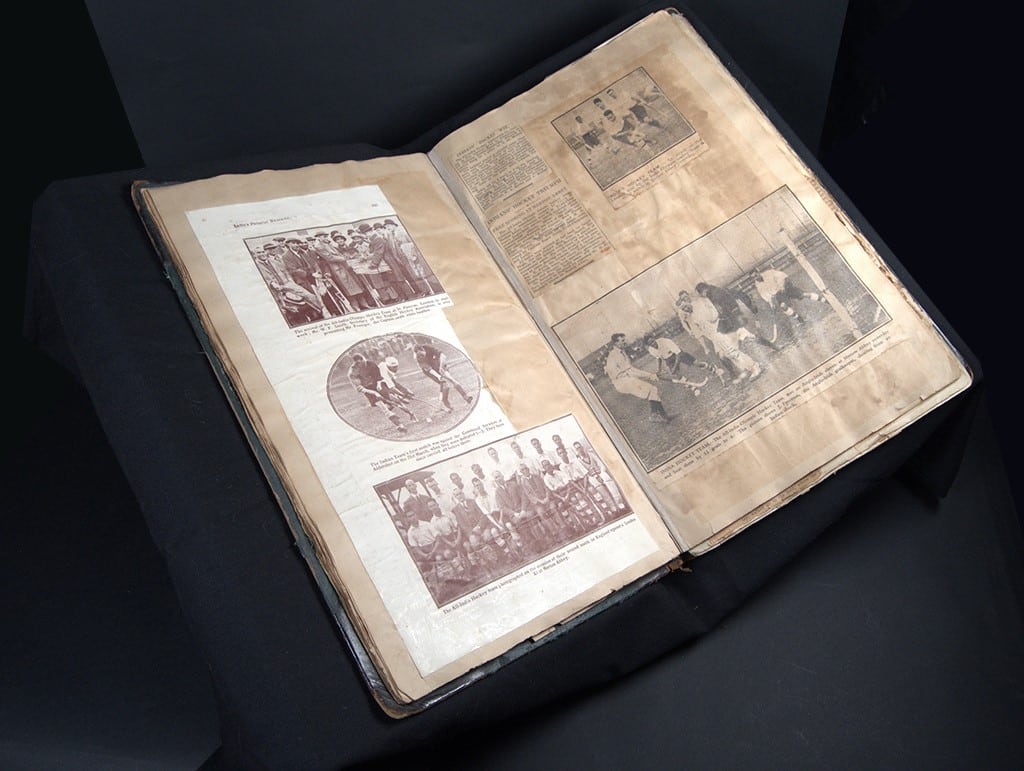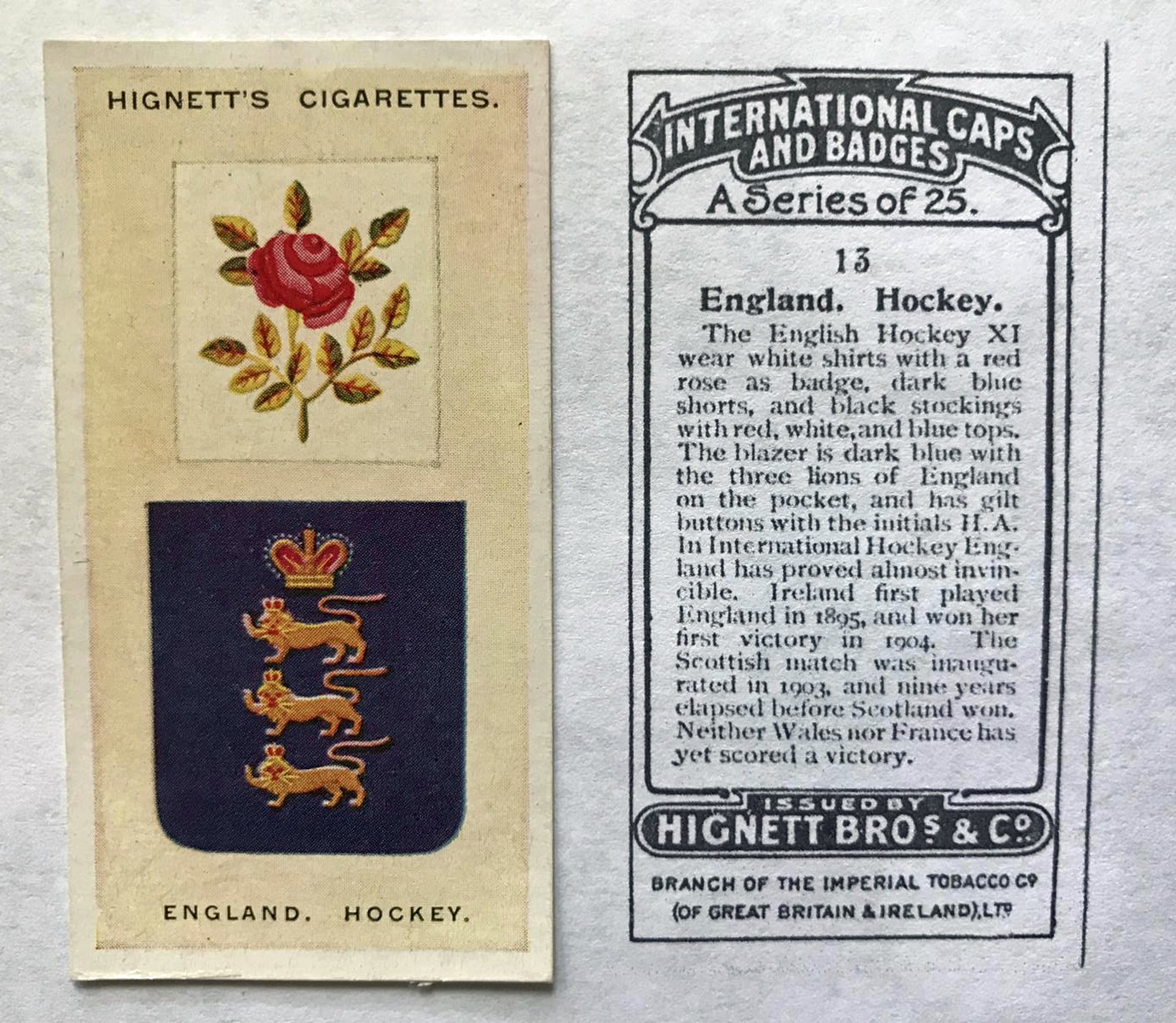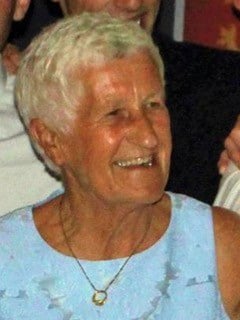The Hockey Museum (THM) is delighted to share that it has acquired a scrapbook of extraordinary cultural value which relates to India’s Olympic hockey success at their first Games in Amsterdam in 1928. It belonged to George Eric Marthins, a Catholic Anglo-Indian member of that gold medal-winning men’s hockey team.
Acquiring the scrapbook
Several years ago, The Hockey Museum (THM) supported journalist and author Lucy Sheriff with significant historical research for an article she was writing about her ancestor, the Anglo-Indian hockey player Rex Norris. Rex and George were two of nine Anglo-Indians in the national hockey team.
Lucy’s article was published online in January 2025 by Switchboard magazine in the United States of America (USA). It follows Rex’s journey from India on a hockey tour of Europe which culminated in the British-India men’s hockey team competing in the summer Olympic Games in Amsterdam in 1928. There they won the first of India’s six consecutive Olympic gold medals (1928-1956) – an unprecedented period of sporting dominance.
Read Rex Norris’s story: Barefoot Hockey | Switchboard Magazine
Following the publication of Lucy’s article, it was picked up by the granddaughter of Rex’s Olympic teammate George Marthins, Una-May O’Reilly, in the USA. Una-May then shared it with her family, including her brother Ian who lives in Canada. Ian had been researching their grandfather’s prestigious sporting history. Contacting Lucy, they quickly learned of THM and reached out to us.
It turned out that Una-May and Ian’s mother (George Marthin’s daughter) had in her possession a heritage item of incredible cultural value – a scrapbook of George’s hockey career. The cuttings from Indian newspapers cover his emergence as a prominent hockey player with his ‘works club’ in Calcutta (Telegraphists) and the trials and selection for the British-India hockey team for the 1928 Olympic Games. Through the pen of these journalists, it documents and commentates on the British-India team’s tour prior to the Games, first to England in March 1928 and then on to mainland Europe before competing in Amsterdam.
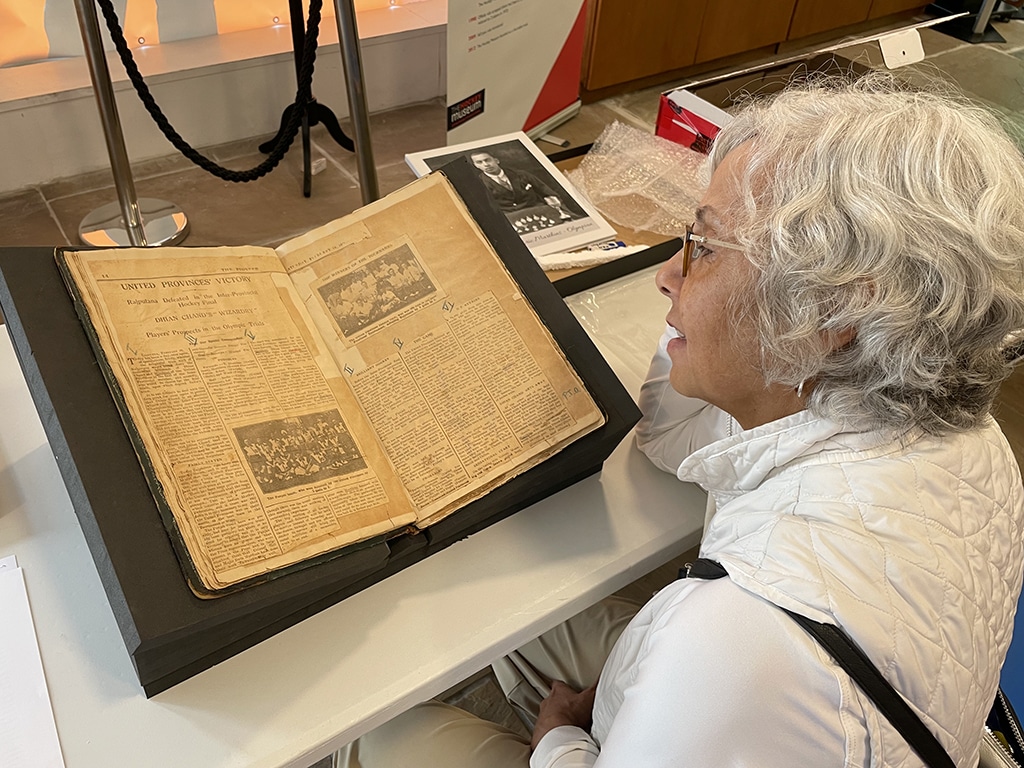
Una-May O’Reilly examines her grandfather’s hockey scrapbook during a recent visit to the UK.
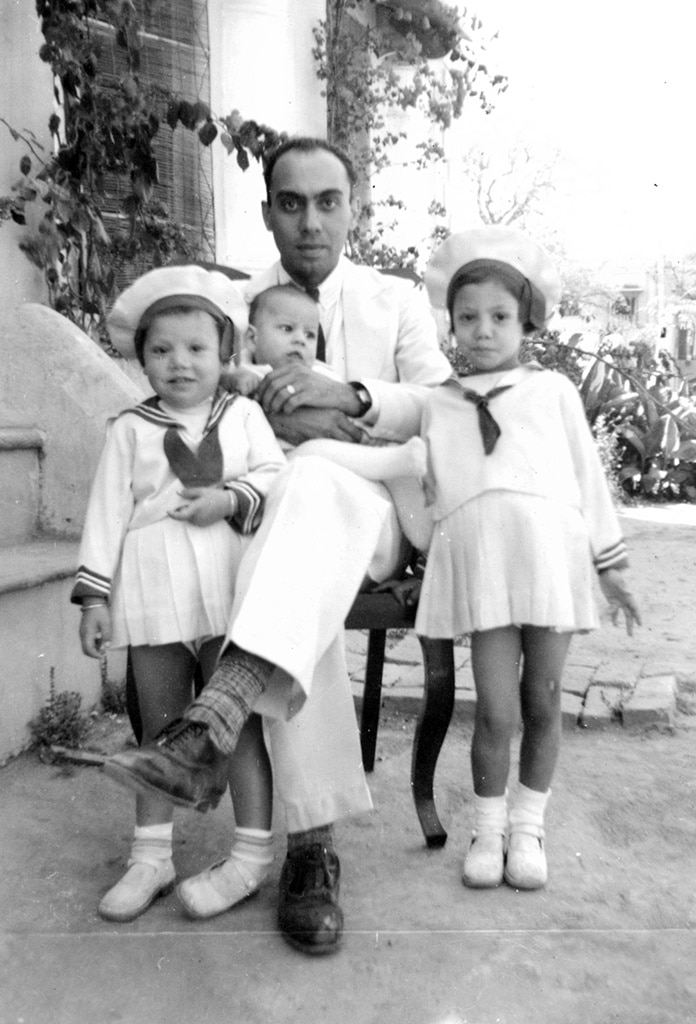
George Marthins photographed in 1938 with his grandchildren.
Photograph courtesy of the O’Reilly family.
This scrapbook was the primary source of Ian’s research into his grandfather, which culminated in a biography of George, created primarily so that future generations of his family could appreciate their ancestor’s hockey legacy. This book now resides in our library and most excitingly of all, the scrapbook has been donated to the Museum, arriving from Canada to form part of our extensive archive. As a ‘primary source’ record from the period, it complements Lucy Sheriff’s article as well as existing research by THM founder-trustee Dil Bahra, and THM volunteers Dr Nikhilesh Bhattacharya and Ian Smith. Collectively, their work explores early Indian hockey and India’s journey to its first Olympic gold medal.
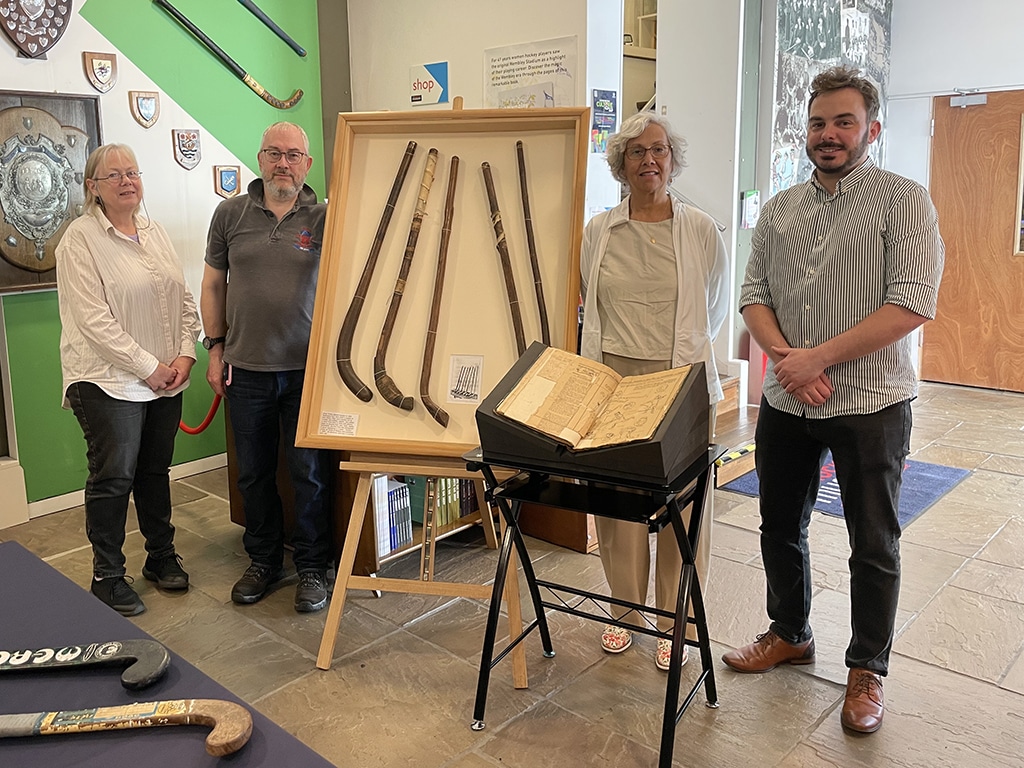
Una-May with members of The Hockey Museum team during her visit in June 2025.
From left to right: museum volunteers Judith Canty (textiles), Marcus Wardle (archivist), Una-May O’Reilly and Shane Smith (curator & museum manger).
George Marthins, the hockey player
George Marthins played primarily in the position of inside-right – an attacker who plays centrally behind the principal forward on the right side.
Alongside George (and Rex Norris) in the British-India team was a player of legendary fame – centre-forward Dhyan Chand. He became known as ‘The Wizard’ for his expert ball control and is widely regarded as the greatest hockey player of all time. Dhyan Chand’s birthday (29 August) continues to be celebrated as the National Sports Day in India to this day. Inevitably, George fell into Dhyan’s shadow, but the scrapbook cuttings reveal a player of great stickwork who set up many goals for his prolific colleague as well as scoring a significant number himself. The two men played together in the United Provinces hockey team as well as for the national team and clearly developed a formidable understanding.
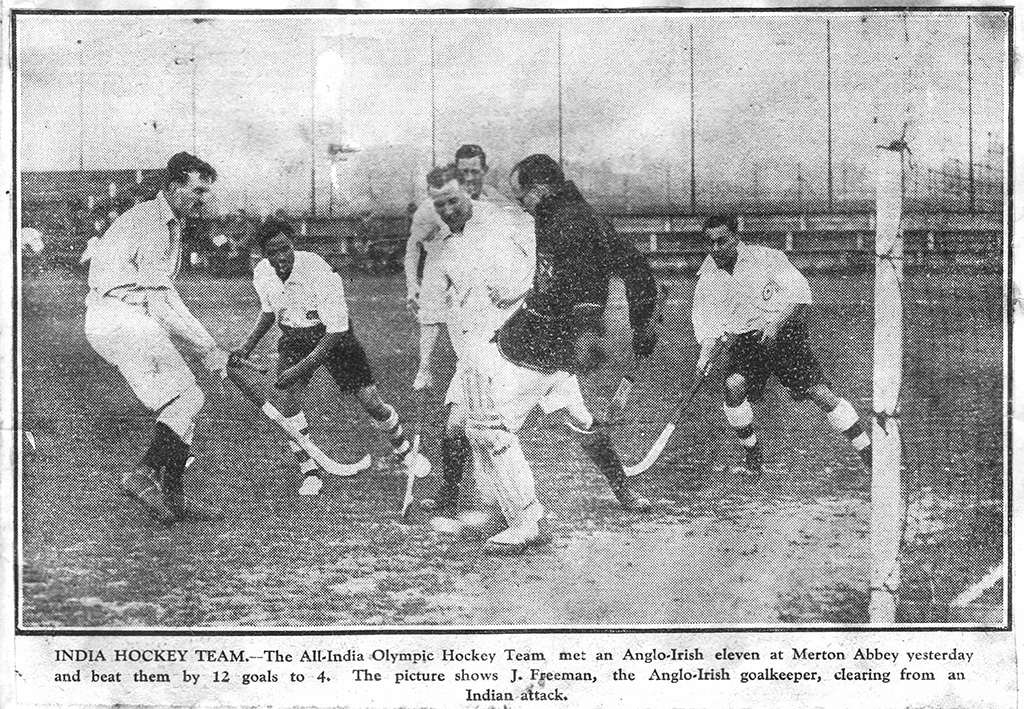
George Marthins (right) and Dhyan Chand (second from left) in action against an Anglo-Irish XI at Merton Abbey during the British-India team tour of Europe in 1928. The Indians won 12–4.
Scanned from George Marthins’s scrapbook.
In the final match versus a ‘Rest of India’ team before departing for Europe and the Olympic Games, the British-India team played to “such a high standard as has never before witnessed in Calcutta”, demonstrating “forward short passing … positively brilliant”. Collectively, they had developed a distinct style of ball progression and teamwork that would prove revelatory to their opponents – with George Marthins at the heart of it. Dhyan Chand would later describe European hockey as “mainly a hit and run affair” and only after the visit of the Indian team did others start to copy the Indian style.
When the British-India team landed in England they played matches against several teams and also took part in the Folkestone Tournament. Of their 11 matches in England their record stood at nine wins, one draw, one loss; goals for 72; goals against 18. On mainland Europe, they played seven, won seven; goals for 63; goals against six. Astonishingly, this equates to a combined total of 135 goals scored during their pre-Olympic tour of Europe, conceding only 24 times. Of these, George scored 27 goals and Dhyan scored 67 – 70% of all India’s goals between them!
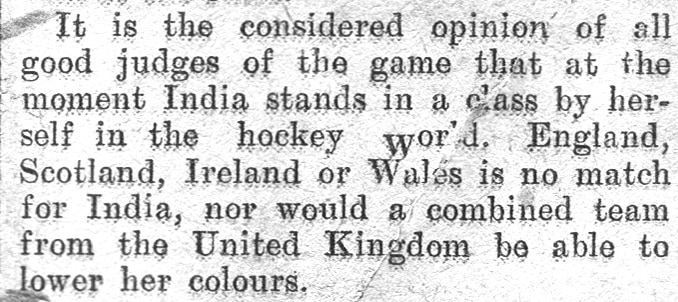
Comment on the Indian team’s dominance in the English press of 1928.
Scanned from George Marthins’s scrapbook.
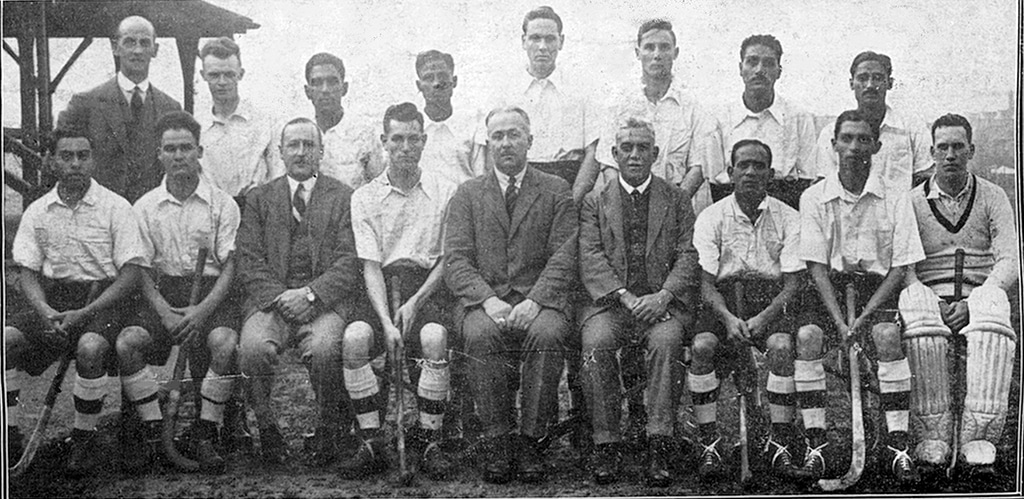
The British-India hockey team photographed prior to their match against a London XI at Merton Abbey, England in 1928.
Scanned from George Marthins’s scrapbook.
During the Amsterdam Olympic Games, the gold medallists’ results were:
- vs Austria 6–0
- vs Belgium 9–0 (Marthins 1 goal)
- vs Denmark 5–0
- vs Switzerland 6–0 (Marthins 1 goal)
- vs Netherlands (Final) 3–0 (Marthins 1 goal)
Obituary
Read an obituary of George Marthins, written following research by his grandson: George Eric Marthins, 1905–1989 – The Hockey Museum

